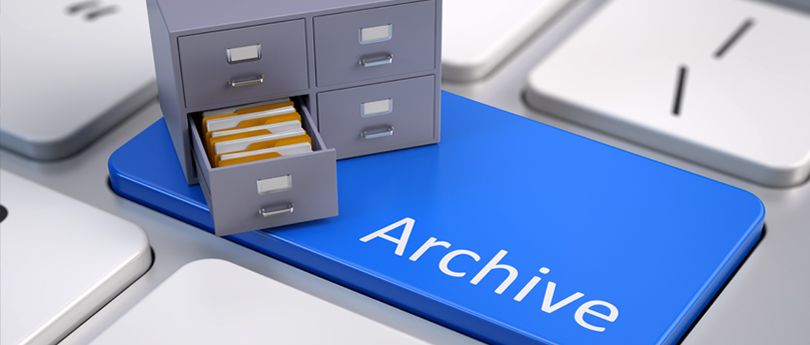Read time 7 minutes
Exchange 2010 was released with some magnificent features, and one among these features was Archive Mailbox. This feature was added to resolve the issues related to PST files that often give headaches to Exchange admins. The primary benefit of the archive mailbox is that the emails/messages and other data that is older can be stored in an archive folder.
But disaster can strike anytime which can lead to Exchange data loss, and then you might need to perform a full recovery of Exchange data including that of archive mailboxes. So, if you want to avoid disaster recovery of Exchange, then prefer recovering archive mailboxes time-to-time.
In this article, we will talk about some effective methods to recover archive mailboxes from Exchange 2010.
Methods to recover Archive mailboxes from Exchange Server 2010
There are generally two methods to recover archive mailboxes from Exchange 2010. The manual method involves using the New-MailboxRestoreRequest cmdlet. And then there is an alternative solution to recover archive mailboxes. Here, we will discuss both these methods in detail.
Method 1. Recovering Archive mailboxes in Exchange 2010 using recovery database
To use this procedure, first, you need to restore the database and logs from backup and use an alternative location to store the data. Now, follow the below steps to recover archive mailboxes in Exchange 2010.
- Copy the backup of Exchange Server to the location that will be used for the recovery database.
- Create a recovery database using the below command and give a unique name to it.
New-MailboxDatabase -Recovery -Name <RDBName> -Server <ServerID> -EdbFilePath <RecoveryDBPath> -LogFolder <RecoveryLogsPath>
- But, before mounting the recovery database, you need to bring it in clean state, which means all the logs need to be replayed. We can use ESEUTIL in recovery mode to put data in a clean state with the following command:
Eseutil /R Exx /l <RDBLogFilePath> /d <RDBPath>
- Go to Exchange Management Shell to mount the recovery database with the following command:
Mount-Mailboxdatabase <RDBName>
- Now, to restore the archive mailbox, we will use New-MailboxRestoreRequest cmdlet. The TargetArchive parameter will be used to verify that the restored content is stored in the archive mailbox.
- Also, you’ll have to specify Archive GUID as source store mailbox. We will use the below command to get the Archive GUID of archive mailboxes.
Get-mailbox <UserID> | fl ArchiveGUID
- After getting the GUID for archive mailbox, you can pass it to NewMailboxRestoreRequest using following cmdlet.
New-MailboxRestoreRequest -SourceDatabase <RecoveryDB> -SourceStoreMailbox <ArchiveGUID> -TargetMailbox <UserID> -TargetIsArchive
TargetArchive ensure that recovery is performed against archive mailbox. Once the process is finished, the status will be changed to Completed.
This is an excellent method for restoring personal archive mailboxes.
Limitations of manual method
Though suitable for restoring archive mailboxes, there are some limitations to this manual method, such as:
- You need administrative privileges to perform this action
- It is difficult for non-technical users
- No guarantee of complete archive data recovery
Method 2. Automated recovery of Exchange Archive mailboxes
You can restore mailboxes from Exchange Server or EDB files using Kernel for Exchange Server recovery software. It is a useful utility to restore archive mailboxes too. It gives you the freedom to access archive mailboxes of Exchange and convert them to PST format. You can also migrate archive mailboxes to Office 365 or Live Exchange using this Exchange mailbox recovery tool. The smart filtering options of the tool enable users to restore specific items of archive mailboxes based on their date, size, item types, etc.
Now, let’s see how this EDB file to PST Converter works and how you can recover archive mailboxes of Exchange 2010 using this utility. Follow the below steps:
- Download the tool and install it on your system where EDB file is stored.
- Now, launch the tool, and you’ll see multiple options on the home screen. Click the Offline EDB icon.
- Select Offline EDB to select Edb file as source and click Next.
- Browse the Edb file from which you want to recover the archive mailbox. After selecting the file click Next.
- Choose a scanning mode to scan for any errors in the EDB file and click Next.
- The Edb file gets added to the tool. Now, right-click on the root directory in the added EDB file and select Export Mailboxes to PST.
- Select the archive mailbox that you want to recover or export to PST. Select a specific location to save this PST file, and then click Export.
- It will take some time for the process to be finished based on the size of archive mailboxes. Once it is done, a notification will appear on your screen. Click OK to complete the process.
- A new wizard will appear on the screen showing the completion of archive mailboxes that are converted to PST. Click OK to finish the process.
This is the simplest method to restore archive mailboxes of Exchange 2010. Also, then this tool allows you to migrate mailboxes to live Exchange and Office 365.
Conclusion
Users often create archive mailboxes in Exchange to move unused or older emails so that they can free up some space. However, sometimes archive mailboxes get deleted or inaccessible due to errors. So, restoring these mailboxes becomes a necessity as it might hold some important data. The manual techniques are not that easy. Therefore, users can use Automated Exchange recovery tool to restore and export archive mailboxes in PST.
